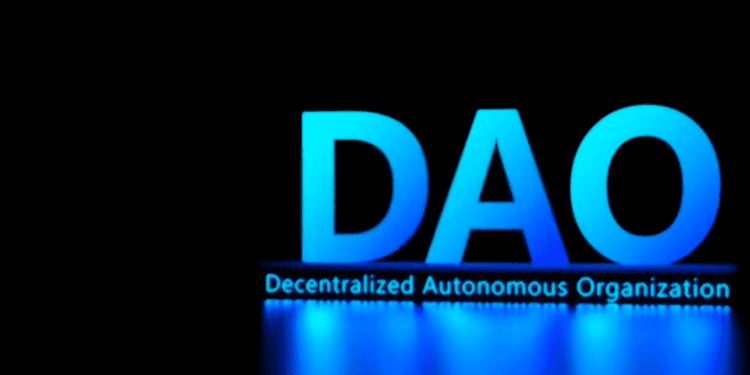A DAO is a blockchain-owned organization with a bottom-up entity structure. It is collectively owned and lacks a central authority. Individual opinions are upheld, and diversity, alongside transparency, is encouraged.
Traditional organizations follohierarchy structure, where members at the highest level create, determine and enforce policies that control general operations. Employees in the organization follow a chain of command, and the authority task lies in a few members’ hands.
However, certain disadvantages to the traditional organization structure have led to the creation of DAOs (Decentralized Autonomous Organizations) not only in the crypto space but also in other global sectors.
The First DAO- Ethereum’s “The DAO”
The first ever DAO was presented as an idea in 2015 by a team called Slock.TheDAO was built on the Ethereum network to raise funding for Web 3.0 projects and startups.
While the original idea was to build an intelligent crowdfunding contract, voting rights and ownership were later added to the program. Investors were given tokens to represent their ETH investments, giving them a slice of ownership in the DAO.
In June 2016, The ICO for TheDAO token sale garnered so much attention, and the amount of $150M (based on ETH value at that time) was deposited in the smart contract.
However, the TheDAO smart contract suffered a hack known as a reentrancy exploit, and less than three months after its launch, over $60 million of ether was stolen.
What is The Purpose of A DAO?
While a decentralized autonomous organization (DAO) is a system built to distribute management, decision-making, and entity ownership among members of the organization, it also has other essential functions.
DAOs allow governance to exist globally, granting like-minded individuals the right to participate in social organizations irrespective of location. It answers the question, “How can we exchange values in a trusted environment?”
The emphasis on decentralization means eliminating third parties and bottlenecked financial institutions. This is achieved through smart contracts, and codes are written to establish the firmness of a DAO without relying on human integrity.
The smart contract upholds the rules that keep the organization running and is public. A single entity cannot change the code or alter agreed practices without other members being informed and in agreement.
For rules and policies to be implemented, all members of the DAO must vote. This is unlike the traditional organization structure, where operations are privy to a set of individuals, and laws passed do not require the approval of mere employees. As internet native organizations controlled by netizens, DAOs can change the modus operandi of corporate governance.
How Are DAOs Used Today?
Today, DAOs are used for all functions that remove the need for intermediaries. Some of the use cases include;
Funding
One of the notable advantages of DAO is raising funds to finance new projects, ideas, or charity endeavors. Since they are unrelated to crypto, corporations can set up DAOs within the established system to scout investors.
Proposals and Policies
Members who hold shares in the DAO use their claims to represent voting rights. The claims are usually tokens, although having a more significant share doesn’t mean a higher authority.
NFT investments and Metaverse Decentralization
These are emerging use cases for DAOs, allowing NFT holders to stake their NFTs for voting rights and metaverse users to make changes to the ecosystem.
Conclusion
DAOs have gone from a trend in the crypto community to becoming a prominent part of other global sectors. The need for creativity, transparency, fairness, and immutability, among other benefits, has bolstered the demand for this type of organization.














